- 114m Cr
- No engineering
- 752 t
- 209 m/s boost
- 13.34 ly (laden)
Pilots Trade Network Elite: Dangerous
Hauling Builds
Large-pad builds
These builds are suitable for Fleet Carrier Trades, WMMs and general-purpose space trucking – anywhere there’s a large landing pad waiting for you, you don’t have to travel far in hyperspace, and you’re not expecting to get into a fight!
TYPE‑9 HEAVY //
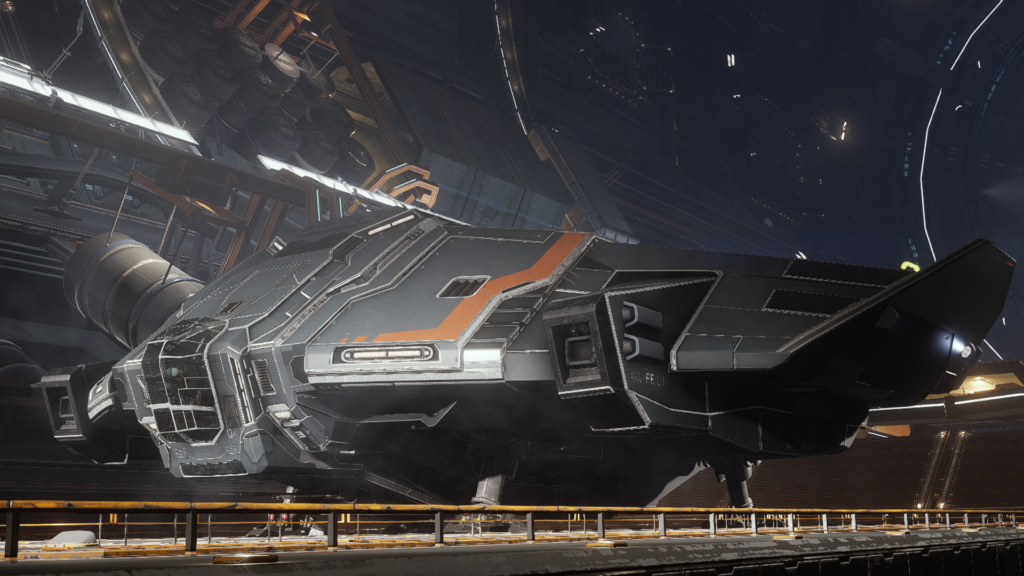
TYPE‑9 HEAVY
Basic Type 9
Overview: The Type‑9 Heavy is slow and ponderous, both in supercruise and normal space, but its cargo capacity is matched only by the Imperial Cutter and, unlike the Cutter, it’s available to any pilot with the cash to buy one.
Recommended use: hauling from Fleet Carriers to Stations and back (see our Carrier Trade Mission guide) because of its low jump range and poor defences. It’s recommended that new pilots equip shields until confident with its handling and performance limits, but these can be swapped for more cargo space when appropriate.
Upgrade path: (Tuned Type 9), Basic Cutter, Boosted Cutter.
Once you have enough credits, upgrade the thrusters to 7A to give you a bit faster boost and turn speed.
TYPE‑9 HEAVY //
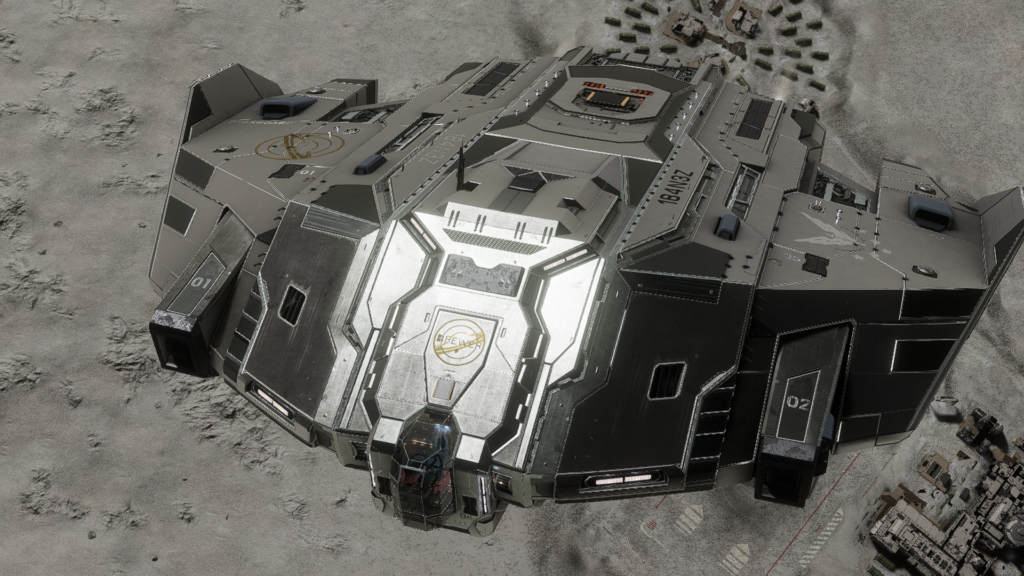
TYPE‑9 HEAVY
Tuned Type 9
- 154m Cr
- Some engineering
- 784 t
- 329 m/s boost
- 20.80 ly (laden)
Overview: A moderately engineered version of the Basic Type 9 with upgraded thrusters (Dirty, Drag Drives) and FSD (Increased Range, Mass Manager). This build uses no shields, giving more cargo capacity. When you are first learning to fly this ship consider adding a shield until you have learnt the handling characteristics. The boost speed of this build is 327 m/s and the unladen jump range is 36 ly.
Recommended use: While this is a viable build for hauling between systems, it is still relatively slow and has a low laden jump range. For frequent longer distance trading, consider unlocking the Imperial Cutter and engineering that instead.
Upgrade path: Imperial Cutter
You can engineer the Power Distributor for more frequent boosts but at this stage it’s generally preferable to start grinding for a Cutter.
Imperial Cutter //
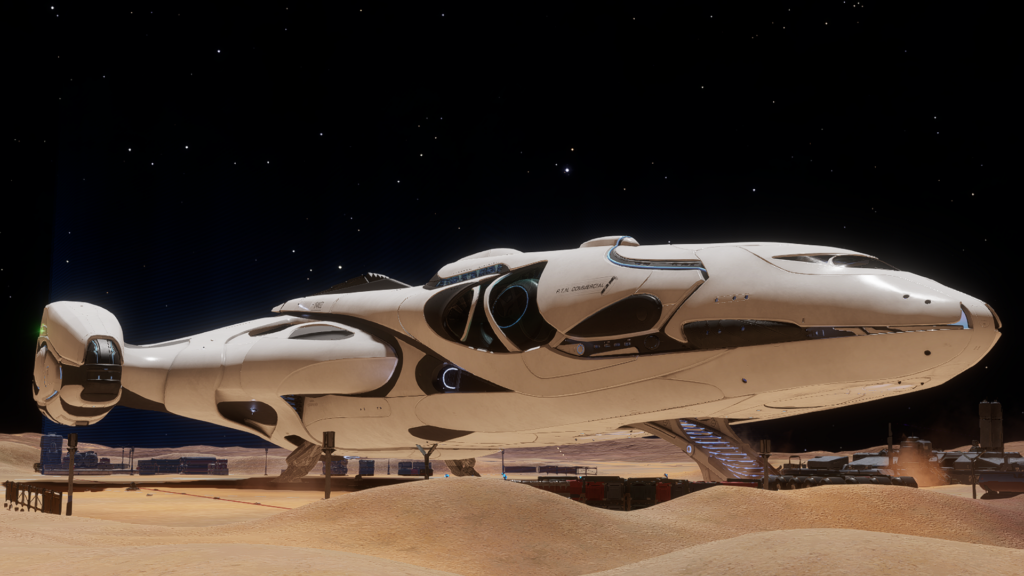
Imperial Cutter
Basic Cutter
- 447m Cr
- No engineering
- 784 t
- 371 m/s boost
- 15.64 ly (laden)
Overview: The Imperial Cutter is the best hauling ship in the game… probably. The Type 9 can match it for cargo space but the Cutter has better speed and defences, so long as you can handle the drift when changing direction.
Recommended use: There is nothing better for L‑pad in-system hauling than a Cutter, except an engineered Cutter.
Purchasing the Imperial Cutter requires achieving an Imperial Navy rank of Duke!
Upgrade path: Boosted Cutter. Engineer the drives and the FSD first.
Imperial Cutter //
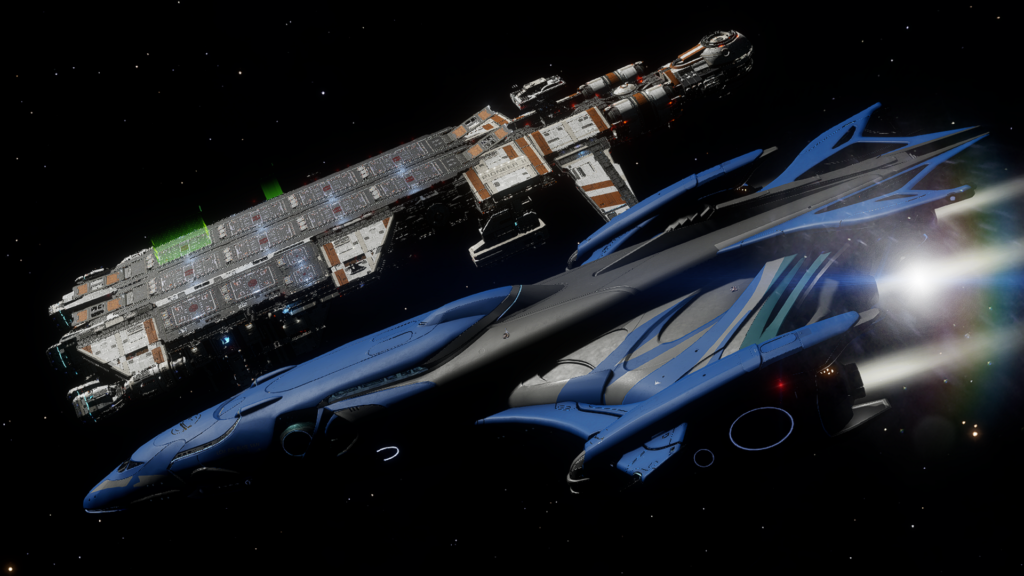
Imperial Cutter
Boosted Cutter
- 450m Cr
- Engineered
- 784 t
- 533 m/s boost
- 25.28 ly (laden)
Overview: This top 1% hauler combines speed, cargo space and comfort. It is crazy fast for a cargo ship and comes with an acceptable jump range. When the rebuy cost isn’t a concern one could use the expensive reactive armour to increase sturdiness. For engineering, focus on the thrusters first – the speed boost is life-changing! (But beware of boosting towards mail slots, the Cutter does not stop as fast as it starts.)
Recommended use: The best L‑pad in-system hauler there is. Not terrible for short hops between systems either. If you get interdicted; Just set your speed to 0 and wait for the drop and then press boost and wave goodbye. The thrusters and the FSD are the most important things to engineer.
Purchasing the Imperial Cutter requires achieving an Imperial Navy rank of Duke!
Panther Clipper MkII//
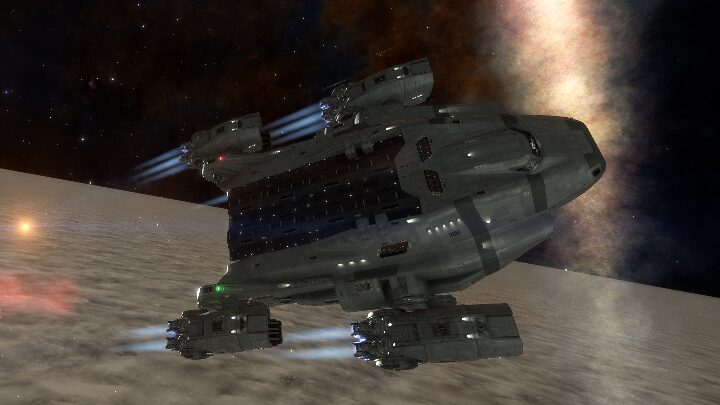
Panther Clipper MkII
Basic PCmk2
- 331m Cr
- No engineering
- 1168 t
- 262 m/s boost
- 12.58 ly (laden)
⚠️The P.Clipper Mk2 is only available for Arx or in Odyssey.
Overview: The Panther Clipper Mk II is the newest and best hauler in the game – but it is currently only available for Arx. Its cargo capacity is unmatched even in the most basic build thanks to its Size 7 and Size 8 Mk2 D‑rated cargo racks. Like other new ships, it is SCO-optimized.
Recommended use: Hauling from Fleet Carriers to Stations and back (see our PTN Trade Alerts Guide), because of its low jump range and poor defences. It’s recommended that new pilots equip shields until confident with its handling and performance limits, but these can be swapped for more cargo space when appropriate.
Upgrade path: Tuned PCMk2
Once you have enough credits, you can upgrade the thrusters to 8A to give you a bit faster boost and turn speed; and the FSD (SCO) to 7A. However, you’ll need to upgrade the Power Plant to 5A as well to do so.
Panther Clipper MkII//
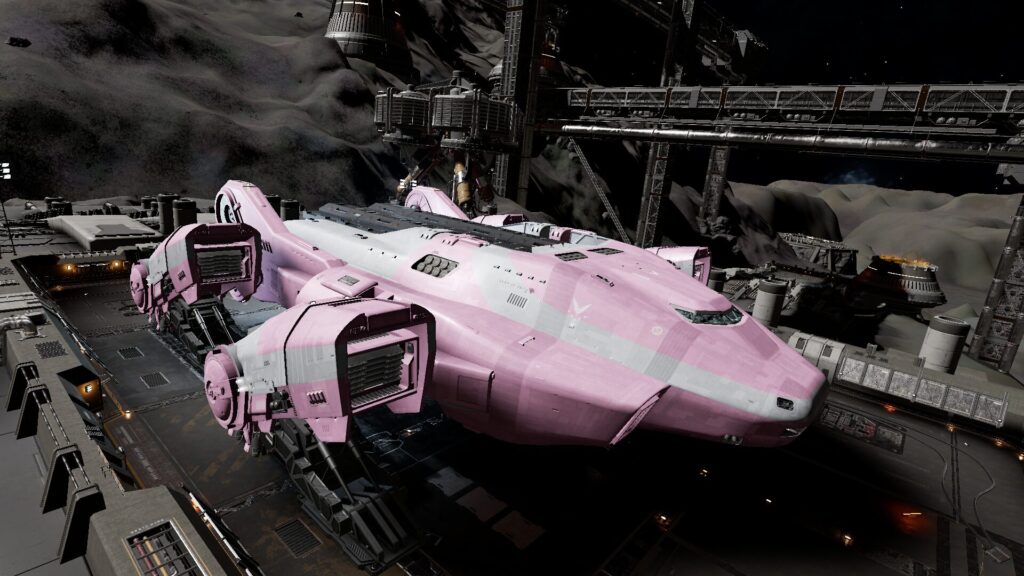
Panther Clipper MkII
Tuned PCmk2
- 531m Cr
- Engineered
- 1232 t
- 413 m/s boost
- 20.86 ly (laden)
⚠️The P.Clipper Mk2 is only available for Arx or in Odyssey.
Overview: A moderately engineered version of the Panther Clipper Mk II with upgraded Thrusters, Hull, Power Distributor, and FSD. When choosing what to upgrade first, the Thrusters, then Power Distributor, are most important. This build uses no shields, giving more cargo capacity. When you are first learning to fly this ship consider adding a shield until you have learnt the handling characteristics. It is faster and more agile than a similarly built T9, while carrying 1,232 tons of cargo. Like other new ships, it is SCO-optimized.
Recommended use: While this is a viable build for hauling between systems, it is still relatively slow and has a low laden jump range (20 ly). It is recommended whenever possible to haul from a local carrier, like noted in our PTN Trade Alerts Guide.
Upgrade path: Other possible engineering is to add an engineered power plant (Low Emissions, Thermal Spread), life support (Light Weight), and sensors (Light Weight). You can also use the Size 5 and 6 engineered cargo racks from Community Goal rewards, or add a SCO FSDv1 for greater jump range.
Medium-pad builds
Sometimes PTN operates from outposts that don’t have large landing pads. These ship builds will allow you to haul as much as possible from these medium-pad-only stations. Suitable for the Booze Cruise as well as M‑pad gold/silver rushes. Keep an eye out for opportunities to fly a python. The experience of flying an agile ship again is worth having it. Be it just for a community goal.
PYTHON //
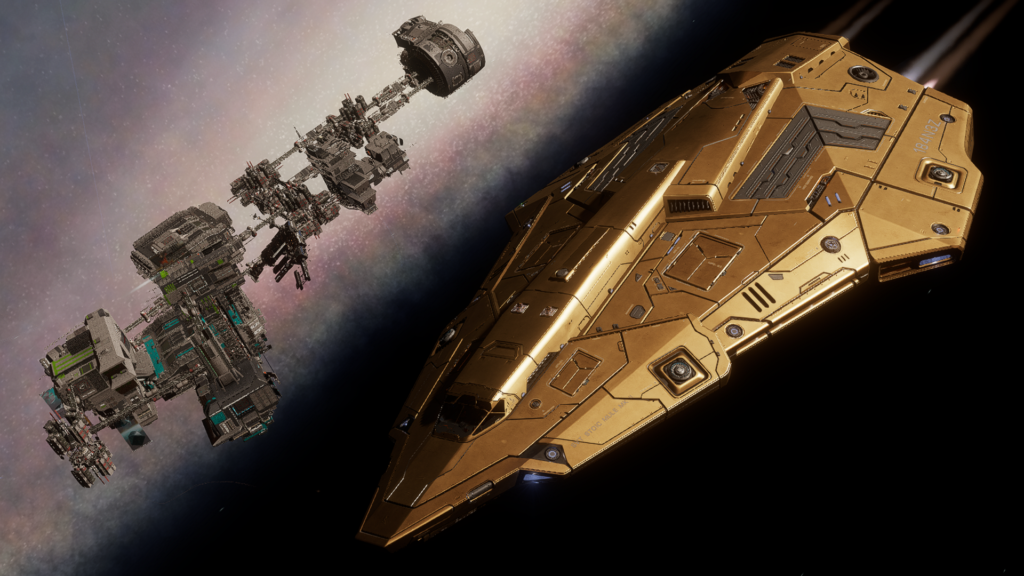
Python
Booze Python shielded
- 67m Cr
- No engineering
- 280 t
- 341 m/s boost
- 16.52 ly (laden)
Overview: A low cost shielded cargo Python. The shields are there to give you time to get back into supercruise if you’re interdicted as you won’t be able to outrun NPC pirates without engineering.
Recommended use: Designed for wine hauling at Rackham’s Peak but works for all regular M‑pad-to-carrier trades. Not recommended for system-to-system trading! Upgrading the FSD to a 5A is recommended for transfers if you have spare funds for it, not for the booze cruise but for general use.
Upgrade path: Booze Cruise Python – Tuned.
PYTHON //
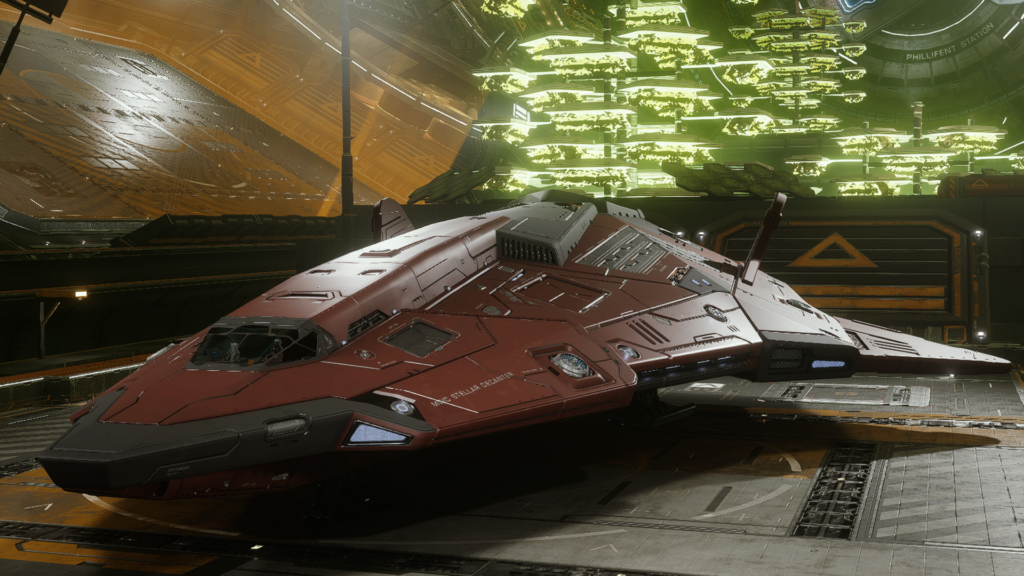
Python
Booze Python tuned
- 225m Cr
- Engineered thrusters
- 288 t
- 507 m/s boost
- 15.21 ly (laden)
Overview: A shieldless Python that relies on speed and armour to survive NPC pirate encounters. Much nicer to fly than a Type 9 or Cutter but obviously hauls a fraction of their total cargo. You can opt for a Military hull instead of a Reactive, for a 142M build with less resists.
Recommended use: This is the best generally-available M‑Pad-to-carrier trader. If you want to use it for system-to-system trades, engineer the FSD and use lightweight armour. An engineered FSD (Long Range Grade 5 + Mass Manager) for non Booze Cruise uses never hurts. And the chaff launcher is just there for the optics – A little glitter never hurt anyone.
Type‑8 //
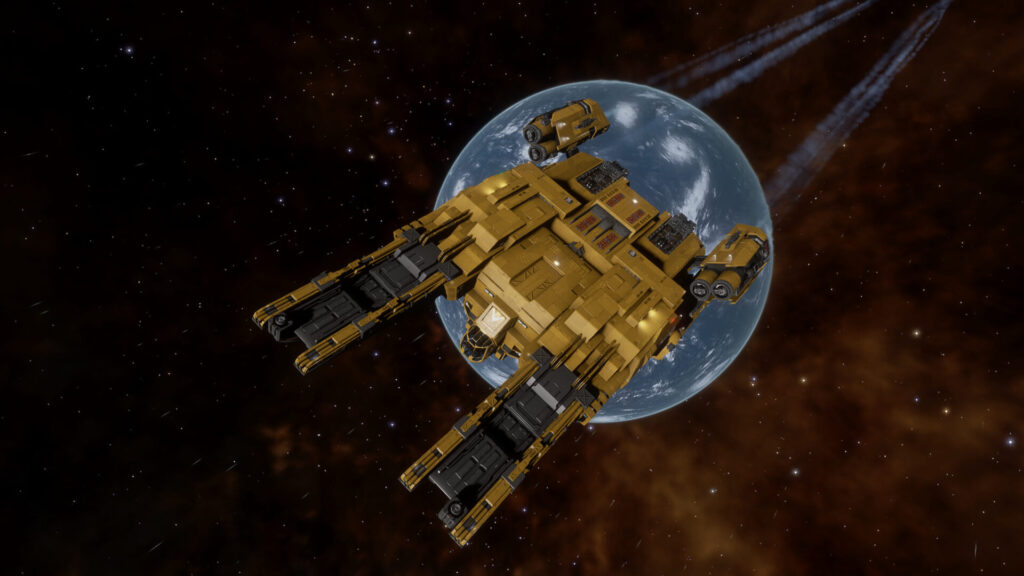
Python
Booze Type‑8 Shielded
- 41.7m Cr
- Engineered thrusters
- 384 t
- 350 m/s boost
- 14.15 ly (laden)
⚠️The Type‑8 is only available for Arx or in Odyssey.
Overview: A low cost shielded cargo Type‑8. The shields are there to give you time to get back into supercruise if you’re interdicted as you won’t be able to outrun NPC pirates without engineering. Being SCO optimised also makes long supercruise trips much faster.
Recommended use: Designed for wine hauling at Rackham’s Peak but works for all regular M‑pad-to-carrier trades. Not recommended for system-to-system trading! Upgrading the FSD to a 5A is recommended for transfers if you have spare funds for it, not for the booze cruise but for general use.
Upgrade path: Booze Type‑8 Tuned.
Type‑8 //
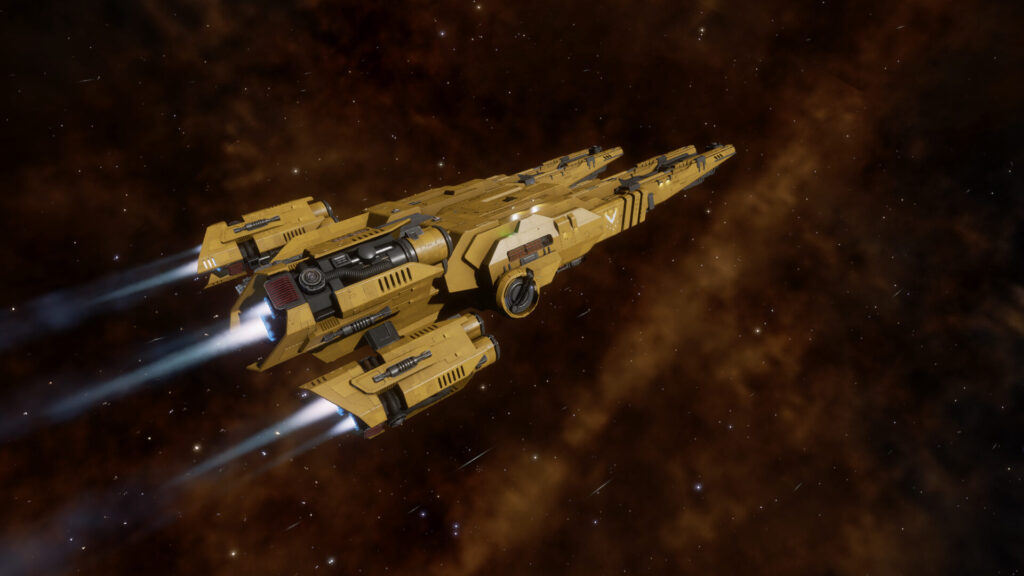
Python
Booze Type‑8 tuned
- 84.8m Cr
- Engineered thrusters
- 400 t
- 526 m/s boost
- 14.24 ly (laden)
⚠️The Type‑8 is only available for Arx or in Odyssey.
Overview: A shieldless Type‑8 that relies on speed and armour to survive NPC pirate encounters. Being SCO optimised also makes long supercruise trips much faster.
Recommended use: This is the best M‑Pad-to-carrier trader. If you want to use it for system-to-system trades, engineer the FSD and use lightweight armour. An engineered FSD (Long Range Grade 5 + Mass Manager) for non Booze Cruise uses never hurts. And the chaff launcher is just there for the optics – A little glitter never hurt anyone.